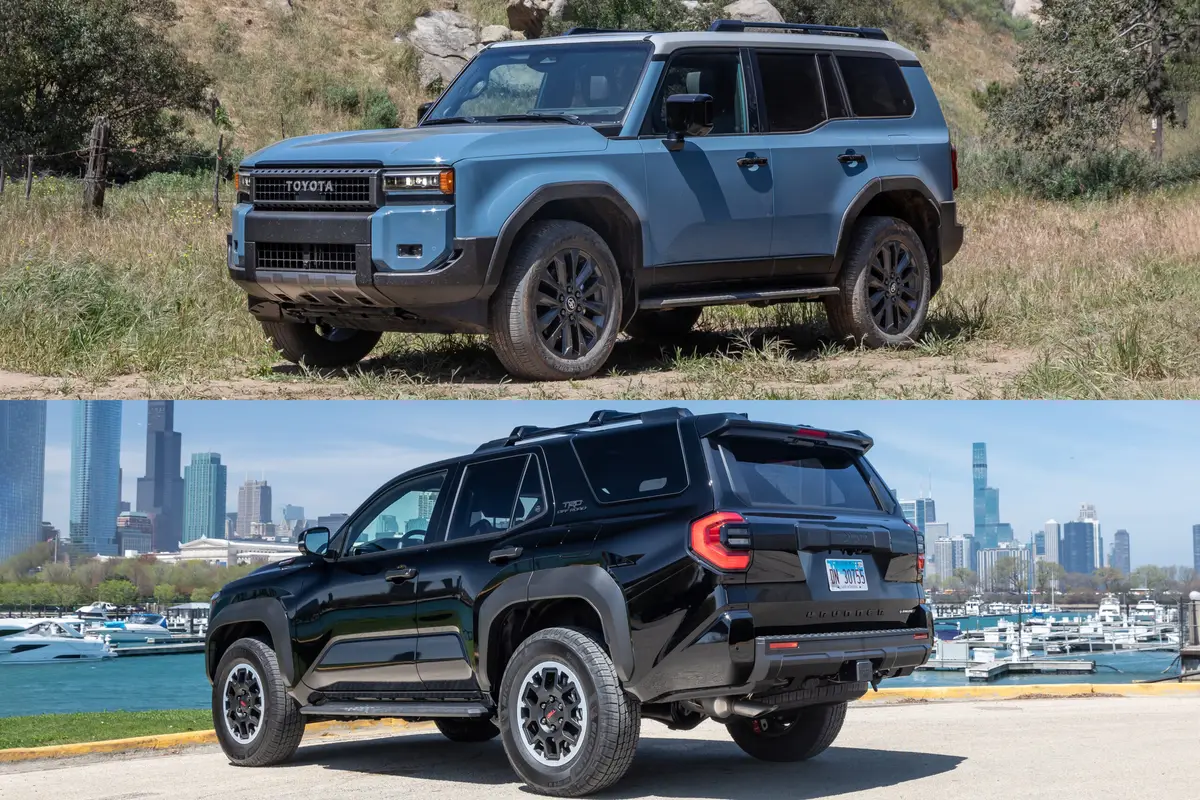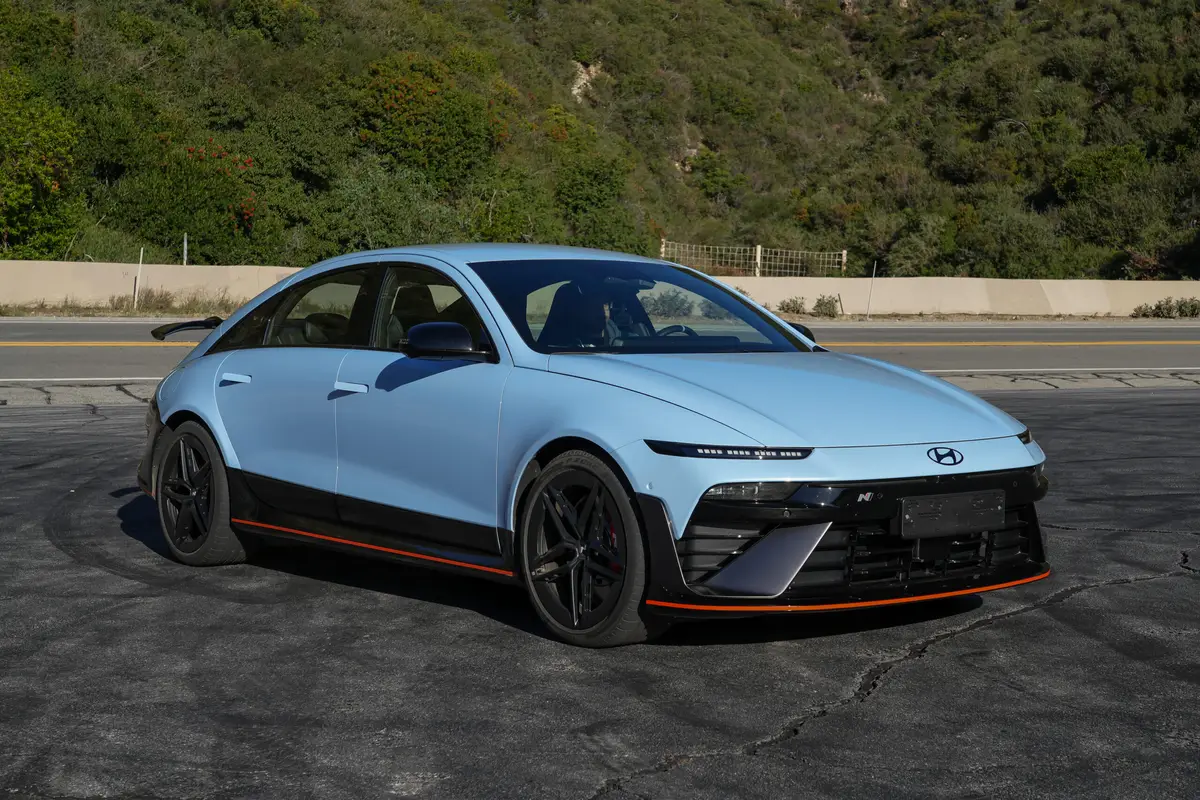Campagna Motors T-Rex and V13R: Quick Spins

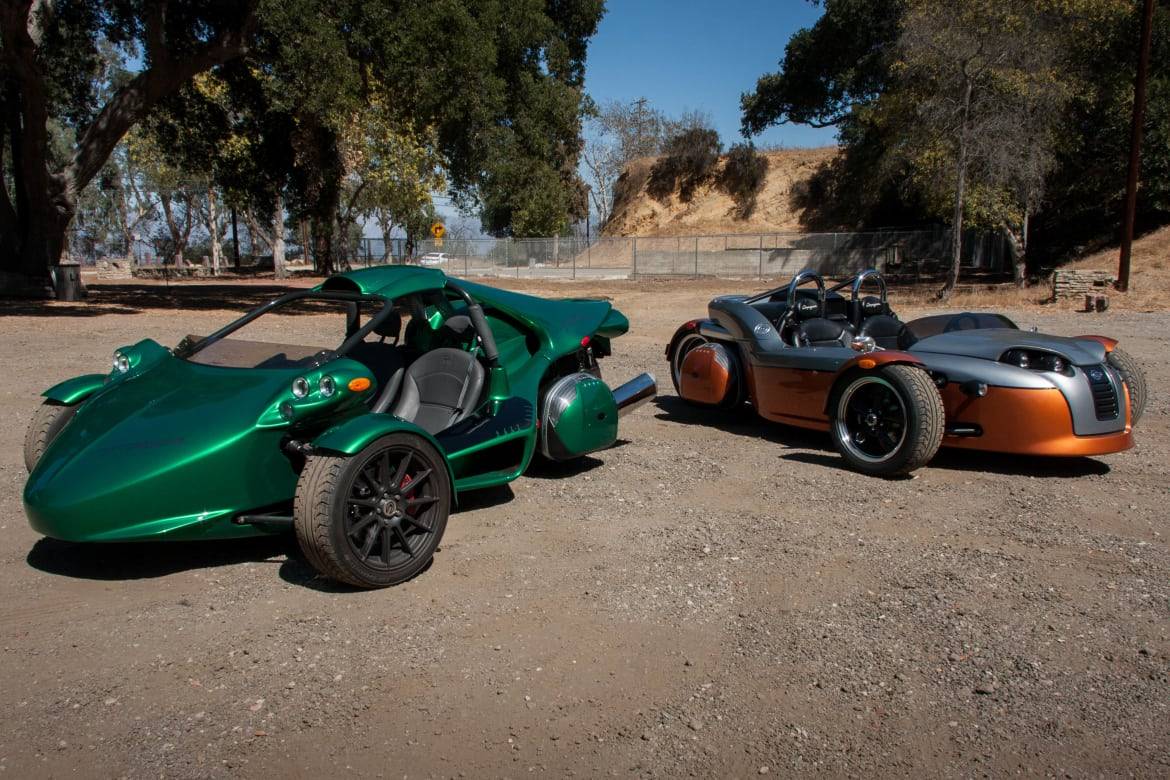
CARS.COM — For those of us who love to drive and want maximum exposure to the road but don’t want to hop onto a motorcycle, there is another way and it comes courtesy of Campagna Motors. I had the chance to try out both of its three-wheel vehicle offerings, the T-Rex and the open-air V13R, in Los Angeles.
So why are we covering these things on Cars.com if they have motorcycle engines and only three wheels? Well, they’ve got seat belts, turn signals, headlights and in most states — including California where I live — you don’t need a Class M license (or a helmet, for that matter) to drive them on the street. That makes them cars to me.
Related: More Quick Spins
Campagna’s two models have different approaches and aims: The T-Rex is the sharper, edgier version while the V13R was designed to be more of a cruiser. However, both scream the kind of unpretentious fun that I adore. Before I hopped in for a drive, I spoke to André Morissette, president of Campagna Motors, to figure out exactly what I was in for. I didn’t even get a question in before he said, “Look, these are not practical things. They are for fun, like toys. So we don’t bother with things like miles per gallon.”
“Maybe you should say that you measure them in smiles per gallon?” I replied, and to Morissette’s credit, he didn’t even chuckle. After the crickets stopped chirping, it was mercifully time to drive.
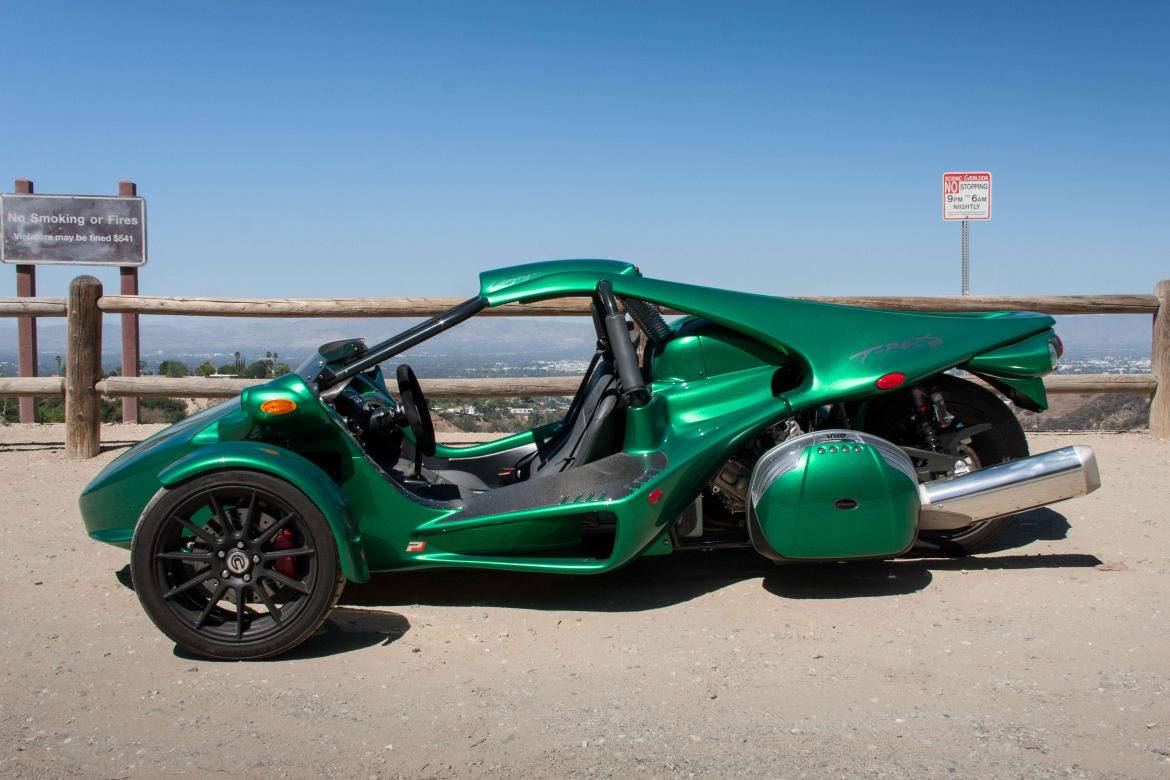
First up was the T-Rex. I tested the performance-focused P// edition with an upgraded suspension, brakes and steering. The engine comes from BMW’s K 1600-series of sport bikes and the 1,649 cubic centimeter six-cylinder engine makes an impressive 160 horsepower and 129 pounds-feet of torque. The T-Rex only weighs 1,157 pounds, which factors out to 7.23 pounds per horsepower. For perspective, a 2017 Ford Mustang GT with its 435-hp V-8 comes in at 8.52 pounds per horsepower. The T-Rex has serious pickup and it will go from zero-to-62 mph in 3.9 seconds. All that power also goes through a single tire, so if you punch it and drop the clutch hard, it will break loose almost instantly.
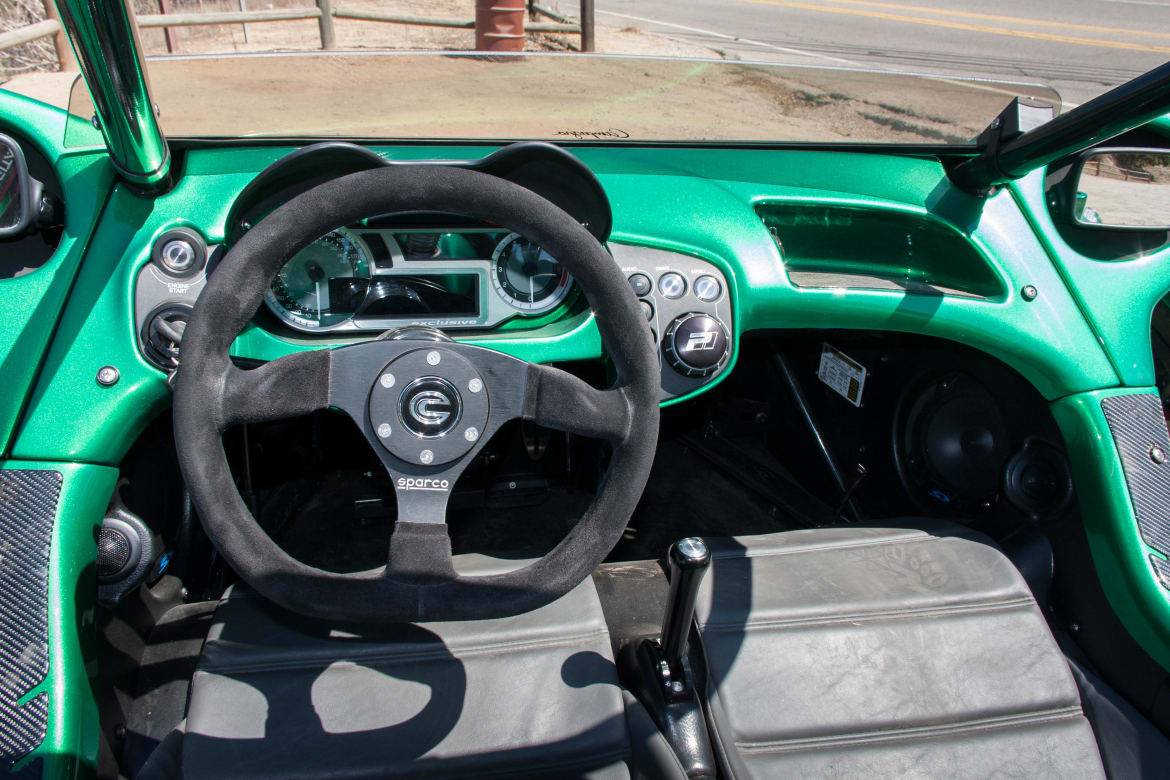
The T-Rex and V13R only come with manual six-speed sequential shift transmissions, which also come from motorcycles. Moving the stick forward puts you in 1st and then pulling it back moves the gearbox into 2nd, 3rd, 4th and so on. The only modification Campagna makes is to add a Reverse mechanism, so you can back them up (like a car).
My co-pilot while driving the T-Rex was a Québécois fireman named Eric who spoke not a lick of English. This mattered less than you’d think; it was so loud in the T-Rex that verbal communication was a moot point and I was relegated to watching his hand signals to get the gist of it.
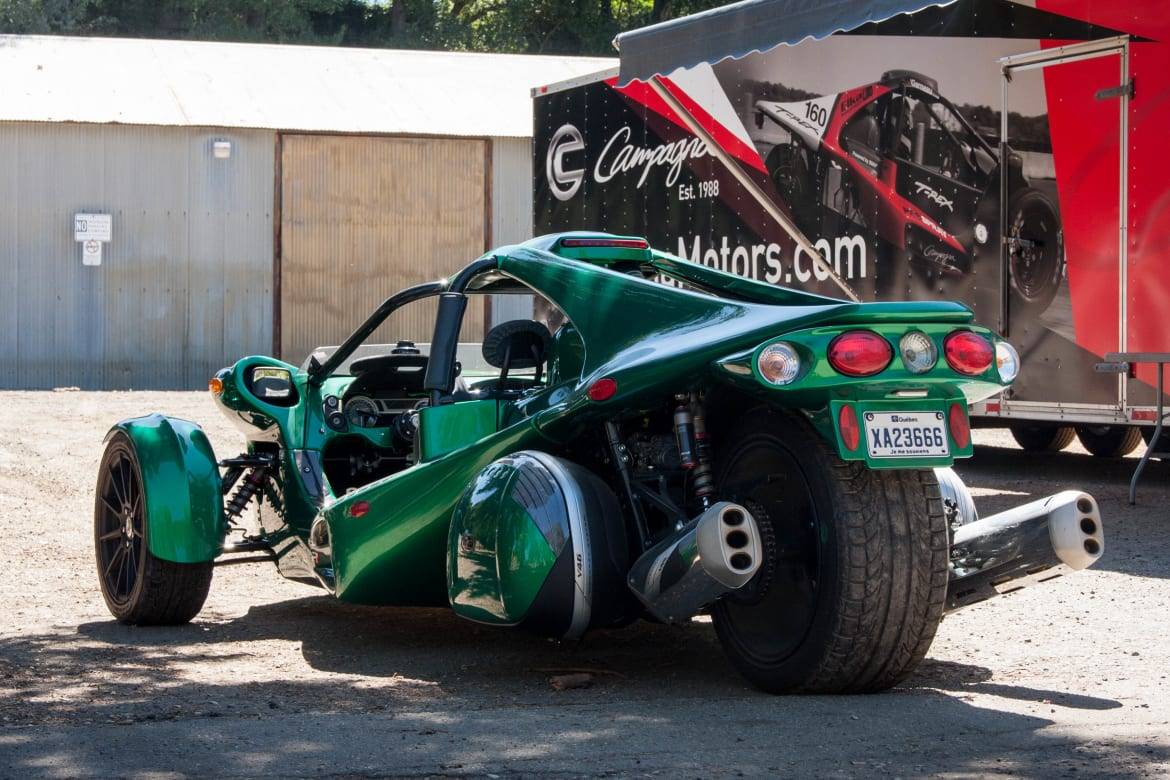
The T-Rex is among the most difficult things I’ve driven. Trying to work a motorcycle transmission with foot pedals is a tough proposition; the clutch is heavy without much travel and a catch point that is hard to locate. When I first hopped into the T-Rex, I may have killed it pretty much immediately. Maybe twice. Eric looked worried, but I couldn’t confirm it.
Once you get the hang of it, however, the T-Rex’s appeal comes sharply into focus. It’s an incredibly visceral experience, with the BMW engine howling behind you and wind directly in your face. With the purely manual steering rack, turn-in is sharp and it feels as if there’s no separation between you and the front tires. The steering combined with the taut suspension means you feel every crevice or bump in the road. At low speeds, turning is quite a workout but once you get going it is an absolute blast.
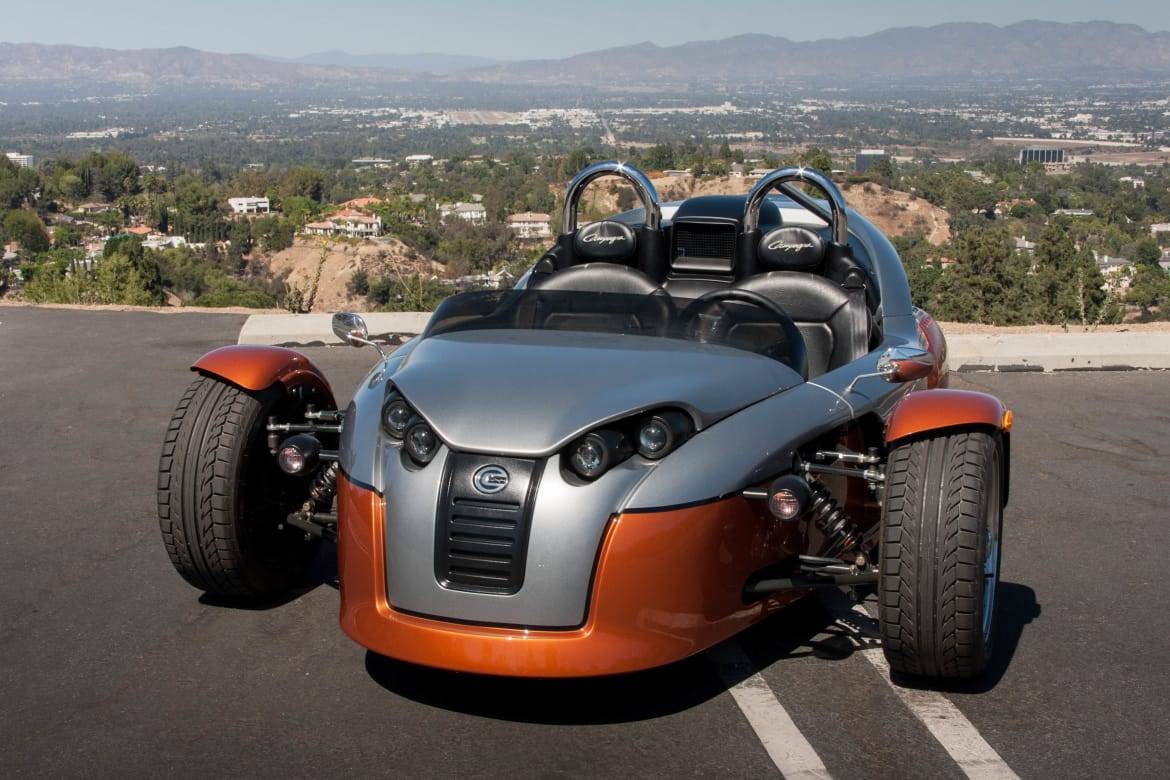
Next I jumped into the V13R, the “roadster” three-wheeler. It has a 1,250 cc Harley-Davidson V-Rod engine that makes 122 hp and sounds much throatier than the BMW engine. Morissette was my co-driver for this leg. He assured me that “this one is much friendlier to drive” and he was right. The Harley engine and transmission was less aggressive than the BMW setup in the T-Rex, and the clutch was more forgiving. The ride was also a bit smoother and the seats more comfortable.
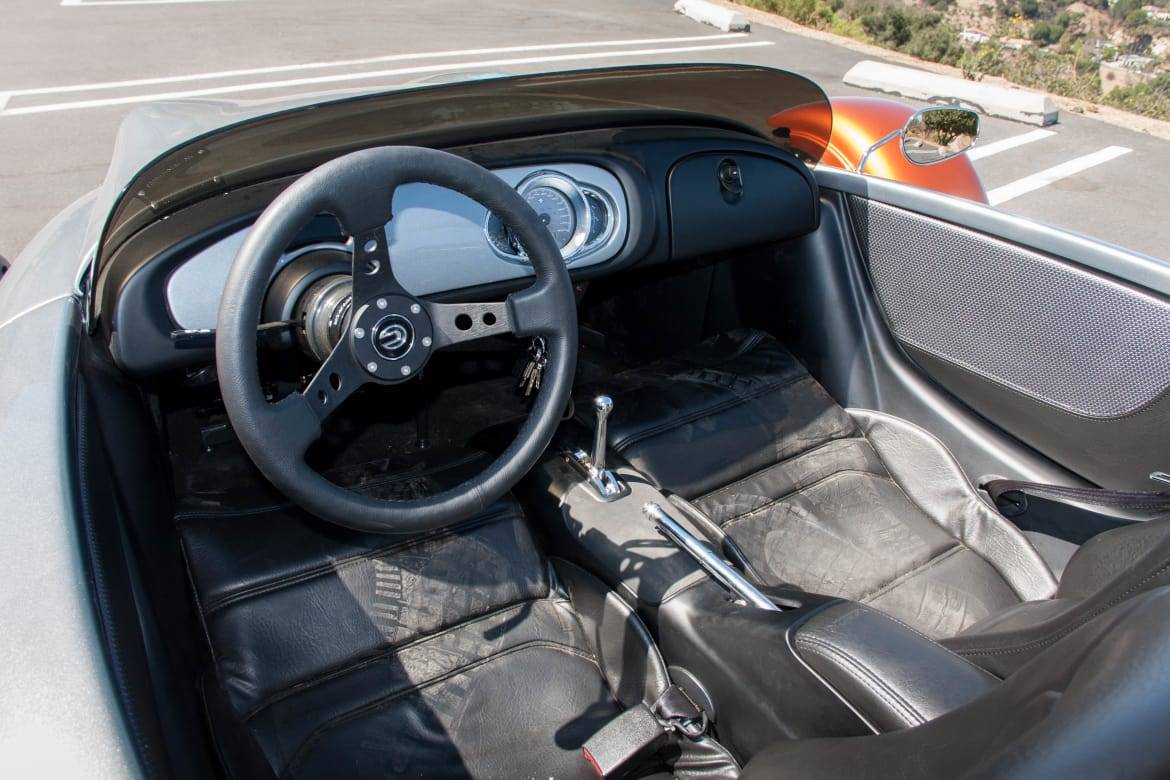
If I had to pick between the two, the V13R would probably be my choice. It sits low to the ground (as does the T-Rex), so balance and handling are still sharp. I prefer the sound of that Harley-tuned engine and even though it’s less rev-happy, the V13R is still stupid fast with a top speed of 130 mph. It also has a slightly larger seating area: In the T-Rex, Eric and I were bunched up tight next to each other, but in the V13R there’s at least a little bit of elbow room. On a track, the T-Rex’s more aggressive setup would carry the day, but on a public road (even a curvy one) with the sun overhead, the V13R strikes a better balance between fun and ease of operation.
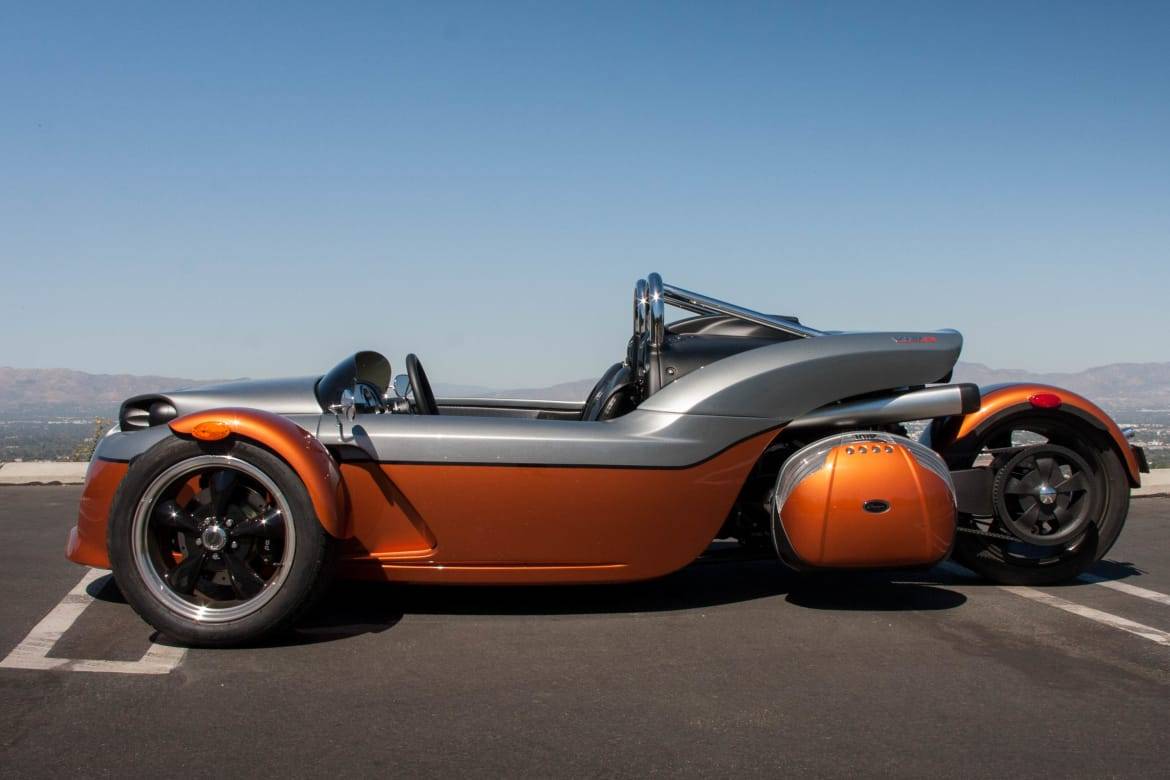
Now, I don’t want to spoil the party, but it would be irresponsible not to tell you that fun can be expensive. The T-Rex S starts at $57,999 and T-Rex S P// that I tested comes in at $63,999. The V13R will run you a cool $53,999.
There’s not really a practical reason to buy these things. They don’t even have trunks. If you want any storage space at all, there are two small, detachable storage bins that sit on either side of the rear wheel and are a $2,299 option on the T-Rex and $1,999 on the V13R. But if the only part of the equation that you care about is “smiles per gallon,” then you can’t do much better than these three-wheel creations. Je les aime. I love them.
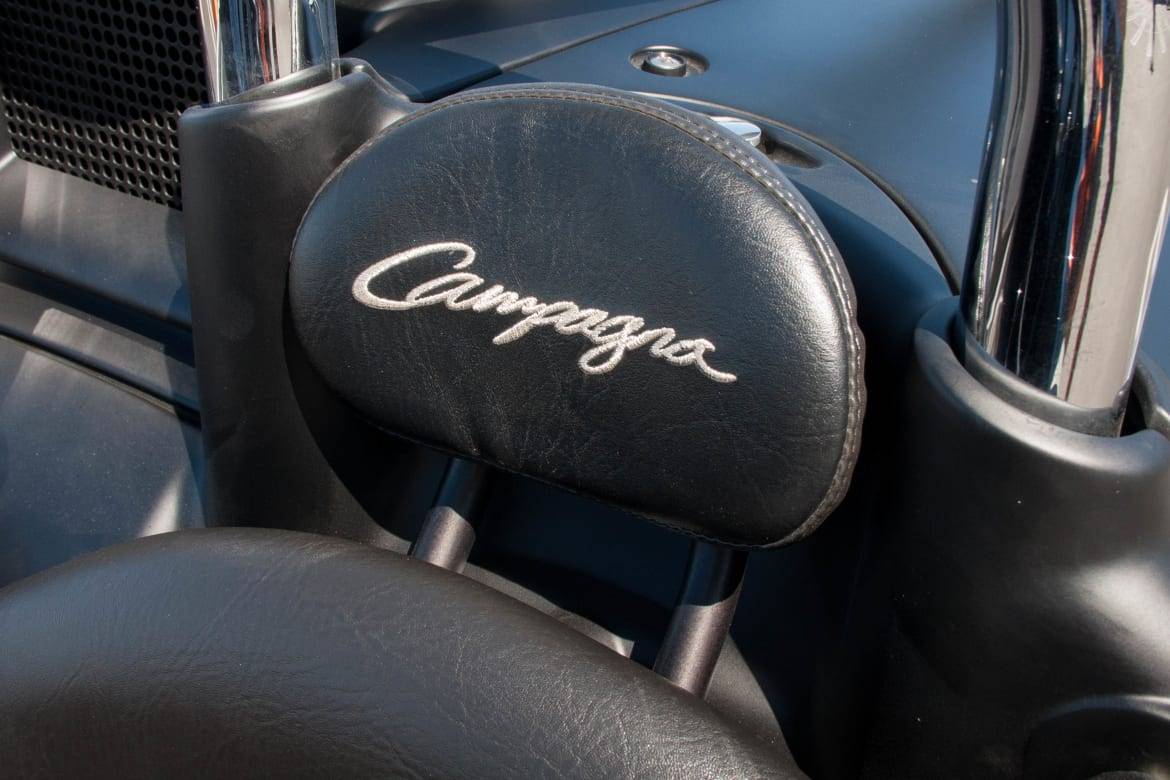

Former L.A. Bureau Chief Brian Wong is a California native with a soft spot for convertibles and free parking.
Featured stories
